 Anúncios ou artes plásticas? Quadros ou posters? Conceptualismo ou consumismo? Estas são algumas dúvidas pertinentes (ou não) que assolam quem espreita o universo da Pop Art em geral e, em particular, a arte do valenciano Antonio de Felipe (n. 1965). Como focos preferenciais - até à data - do seu trabalho de pintura, ilustração, escultura e instalação, Felipe elegou os temas da publicidade (com especial destaque para os logótipos comerciais), o cinema de Hollywood (particularmente retratos de ícones como Audrey Hepburn ou Marilyn Monroe), o pintor Diego Velásquez (uma série inteira homenageando o pintor do Barroco das Cortes Espanholas do século XVII, as suas Meninas e Infantas), retratos de celebridades tão diversas como a Madre Teresa e Claudia Schiffer e, finalmente,... as vacas (antes do advento da CowParade, vacas de todos os tipos e decoradas com inúmeros temas, recorrendo sobretudo à publicidade).
Anúncios ou artes plásticas? Quadros ou posters? Conceptualismo ou consumismo? Estas são algumas dúvidas pertinentes (ou não) que assolam quem espreita o universo da Pop Art em geral e, em particular, a arte do valenciano Antonio de Felipe (n. 1965). Como focos preferenciais - até à data - do seu trabalho de pintura, ilustração, escultura e instalação, Felipe elegou os temas da publicidade (com especial destaque para os logótipos comerciais), o cinema de Hollywood (particularmente retratos de ícones como Audrey Hepburn ou Marilyn Monroe), o pintor Diego Velásquez (uma série inteira homenageando o pintor do Barroco das Cortes Espanholas do século XVII, as suas Meninas e Infantas), retratos de celebridades tão diversas como a Madre Teresa e Claudia Schiffer e, finalmente,... as vacas (antes do advento da CowParade, vacas de todos os tipos e decoradas com inúmeros temas, recorrendo sobretudo à publicidade).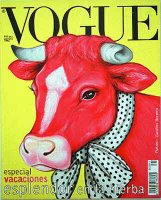 A publicidade é, aliás, o motivo omnipresente na obra de Felipe, a que não é alheio o facto de ter trabalhado como director criativo numa agência de publicidade valenciana. O autor explica:
A publicidade é, aliás, o motivo omnipresente na obra de Felipe, a que não é alheio o facto de ter trabalhado como director criativo numa agência de publicidade valenciana. O autor explica:Estoy muy familiarizado con ese lenguaje y, por eso, he querido incorporarlo a mi obra.
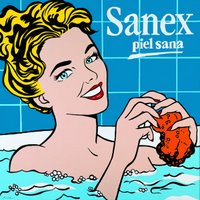 obras, Felipe explica que isso não distorce o intuito original destas e afirma, não sem um boa dose de ironia:
obras, Felipe explica que isso não distorce o intuito original destas e afirma, não sem um boa dose de ironia:Estoy encantado de que, por primera vez, una marca que aparece en mis cuadros haya pagado por difundir mi obra. Es bueno para ellos y es bueno para mí.
Antonio de Felipe é um caso único no panorama da Pop Art espanhola. Antes dele e dignos de referência, só mesmo a Equipo Crónica, também formada em Valencia nos anos 60, (originalmente constituída por Manuel Valdés, Rafael Solbes e Juan António Toledo) e de cuja tradição do “poster pop” o próprio Felipe admite sofrer influência. Se a isso adicionarmos a
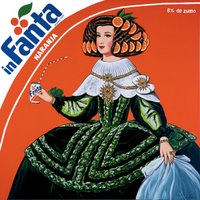 influência das figuras de Velásquez, as cores fortes de Warhol e Lichtenstein e a proveniência de uma região plena de luz, cor e fiesta – veja-se as Fallas de Valencia – entendemos de forma mais clara o universo figurativo e cromático do autor.
influência das figuras de Velásquez, as cores fortes de Warhol e Lichtenstein e a proveniência de uma região plena de luz, cor e fiesta – veja-se as Fallas de Valencia – entendemos de forma mais clara o universo figurativo e cromático do autor.Se, por acaso, passar por Marbella até ao fim deste mês, está patente na Galeria de Arte Pedro Peña uma exposição com 12 obras de Antonio de Felipe. Um complemento colorido e refrescante para apreciar ao vivo quando sair do calor da praia…
Advertising or Fine Arts? Paintings or posters? Conceptualism or consumerism? These are some pertinent (or not) doubts that occur to those who peek at the Pop Art universe in general and the art of the Valencian Antonio de Felipe (n. 1965) in particular. As a preferential focus – until now – of his painting, illustration, sculpture and installation, Felipe elected the subjects of advertising (with a special stress on commercial logotypes), Hollywood cinema (particularly portraits of icons such as Audrey Hepburn or Marilyn Monroe), the artist Diego Velasquez (a whole series as a tribute to the Baroque painter of the 17th century Spanish Courts, his Meninas and Infantas), portraits of celebrities as different as Mother Teresa and Claudia Schiffer and, finally,... the cows (before the advent of CowParade, all kinds of cows decorated with countless themes, especially resorting to advertising).
One of the idiosyncratic features of Felipe’s work is the crossover of distinct universes and their peaceful togetherness in a particularly humorous tone which, at the same time, explores a specific unifying concept (like Van Gogh’s Shoes with the Camper logo or Snow White biting Macintosh’s apple) and clearly discloses the influences that dwell in his work. The whole logotipos series resorts to this coupling between two fields of visual representation that would have nothing in common for a start – works of masters like Picasso, Van Gogh or Velasquez, or icons from the visual universe of animation or comic books (Disney, Hergé) interconnect with commercial brands such as Fanta, Pepsi, Kleenex or Dodot nappies, almost as if they had been conceived for that matter.
Actually, advertising is the omnipresent motif in Felipe’s work, and the fact that he worked as a creative director at a Valencian-based advertising agency is no coincidence. The author explains:
I am very familiar with that language and, therefore, I wanted to integrate it in my work.
If, on the one hand, the amusing reduction of these art objects to advertising images acts as a meditation on their iconographic value, on the other, the limit for the contamination that publicity exerts within the work of art is clearly challenged by the author, integrating in the paintings the logos of his sponsoring companies. Moving further towards this intrusion of advertising with the insertion of the very sponsors in the works, Felipe explains that it does not distort their original purpose and states, ironically:
I am delighted that, for the first time, a brand that appears in my paintings has paid to spread my work. It is good for them and it is good for me.
Antonio de Felipe is a unique case in the scene of Spanish Pop Art. Before him and worth of notice, there was only the Equipo Crónica, also formed in Valencia in the 1960s, (originally composed by Manuel Valdés, Rafael Solbes and Juan António Toledo) and whose “pop poster” tradition Felipe himself admits to have influenced him. If we add to that the influence of the figures of Velasquez, the strong colours of Warhol and Lichtenstein and a home region full of light, colour and fiesta – see Valencia’s Fallas – we understand more clearly the figurative and chromatic universe of the author.
If, by any chance, you happen to pass in Marbella by the end of this month, an exhibition with 12 works by Antonio de Felipe is being held at the Galeria de Arte Pedro Peña. A colourful and refreshing complement to enjoy alive after you leave the warmth of the beach…


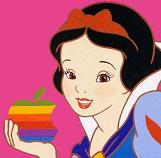
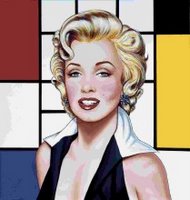
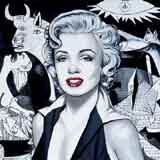



No comments:
Post a Comment